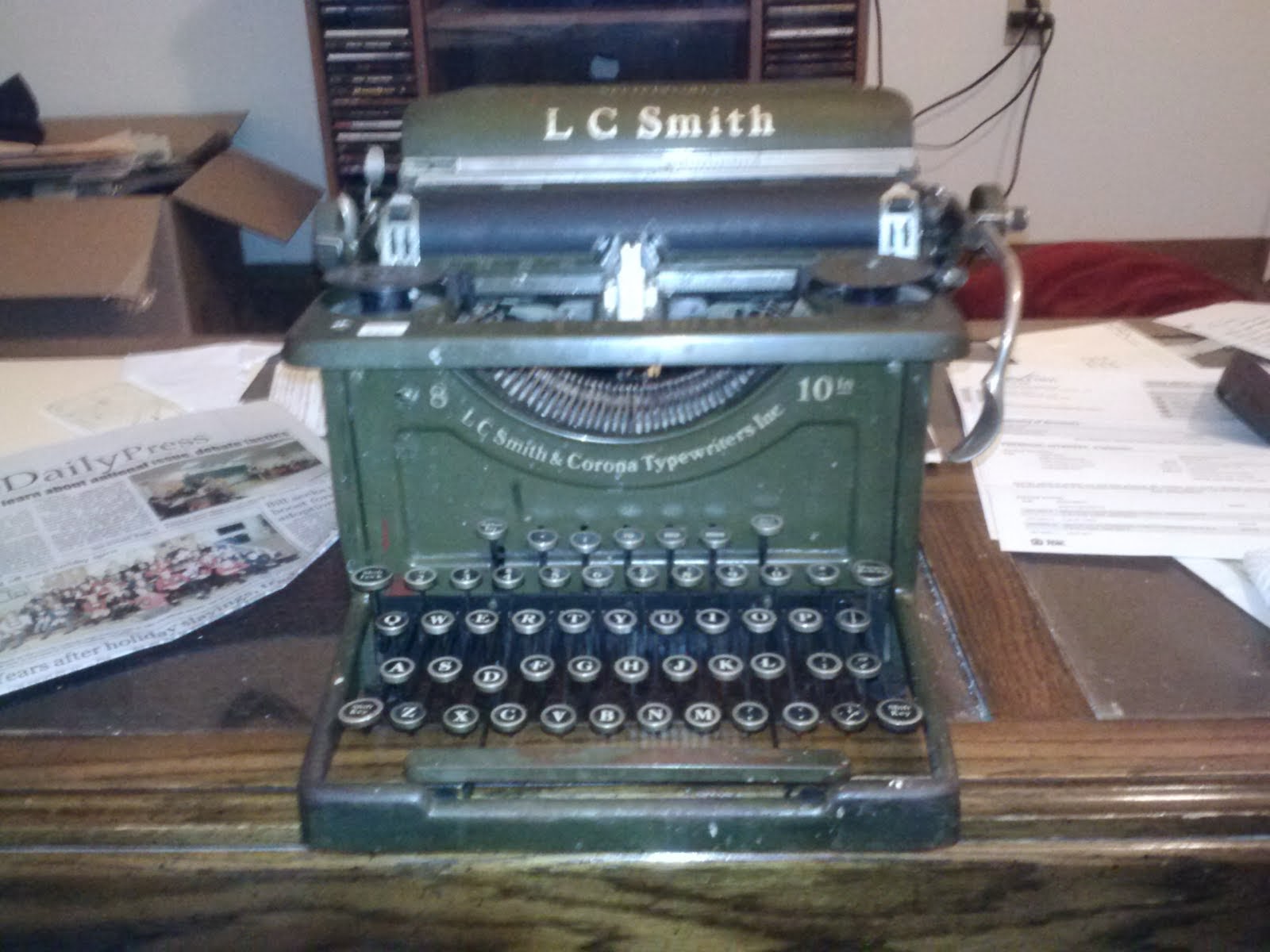The first step to getting the Smith even functional was finding a ribbon. Through asking around, I found a stationary supply and print shop hidden away in an unmarked building in a seldom seen corner of the city. It is the kind of shop that doesn't really need to be seen because it generally serves businesses rather than walk-in customers. I came out of there with universal calculator spool. It seems to be inked a little too well as the type is readable but blotchy.
The simple act of winding the ribbon onto the old metal spools was surprisingly relaxing. Apparently, without even realizing it, I had become so caught up in the high speed world of the digital age that my mind longed to be grounded in physical reality.
The next flaw I found was that the carriage bell often dinged randomly during typing. Having never tinkered with a typewriter before, I had no idea where the carriage bell was actually located. So I began removing tiny screws, removing the back panels and gazing into the guts of the beast.
I found that Hoppe's gun oil worked like a charm in cleaning and lubricating the metal pieces. This should come as no surprise since several companies manufactured both typewriters and firearms over the years, Remington being the most well-known example.
Putting it back together by memory wasn't as easy as I thought. I recommend taking notes, labeling parts and even taking photos at each step. Unfortunately, by the time I had any of these bright ideas, I was already further into the project than I had anticipated.
 In the meantime, I had given the Remington to my girlfriend as a Christmas present, leaving me without a functional typer until I got the Smith reassembled. This served as powerful motivation to get the Smith at least partially back online so that I could type. Luckily, I found the Royal to satisfy my addiction in the meanwhile.
In the meantime, I had given the Remington to my girlfriend as a Christmas present, leaving me without a functional typer until I got the Smith reassembled. This served as powerful motivation to get the Smith at least partially back online so that I could type. Luckily, I found the Royal to satisfy my addiction in the meanwhile.The Smith is now partially back together, to the point where it can be used ... somewhat. I now know how Geordi La Forge feels when he says that the Enterprise's warp engines are only at sixty percent. Everything seems to work somehow, but Geordi is nervous.
The Smith is serving me well as a self-paced tutorial for the tinkering aspect of my hobby. Now that I've connected with the Typosphere, I have other minds to help me along the way. In a way, this hobby is self-supporting. As long as I have typewriters to tinker with, I'll always have something to type about.



